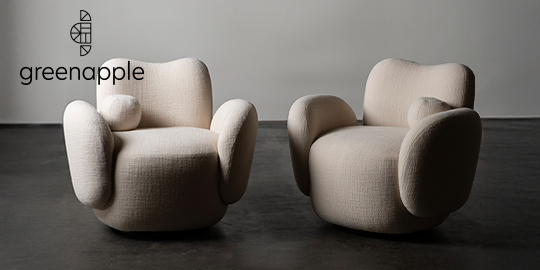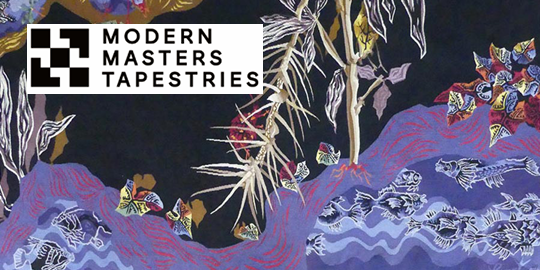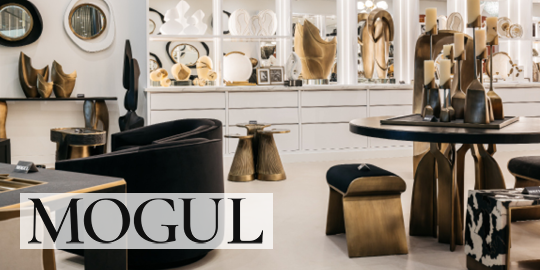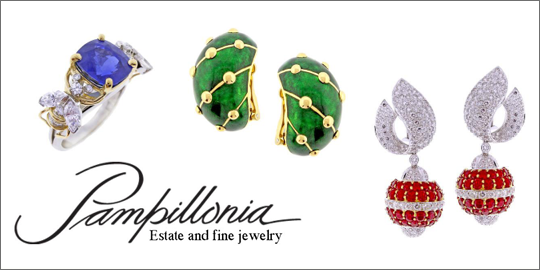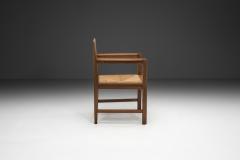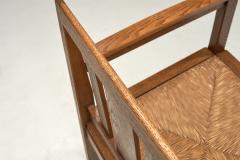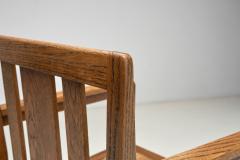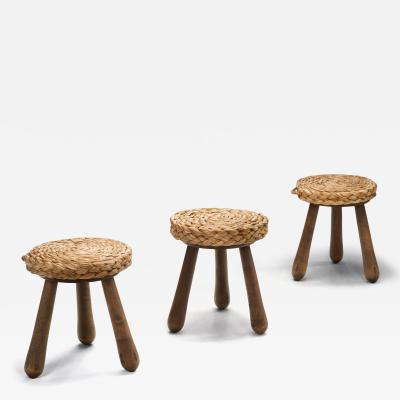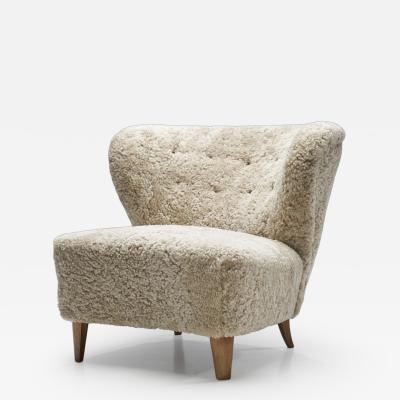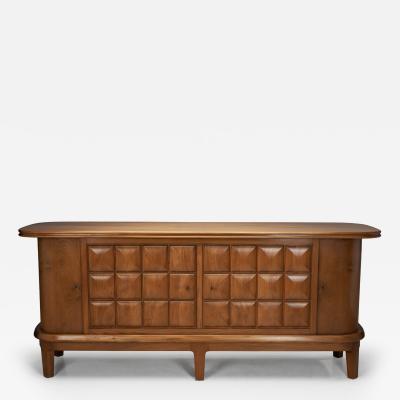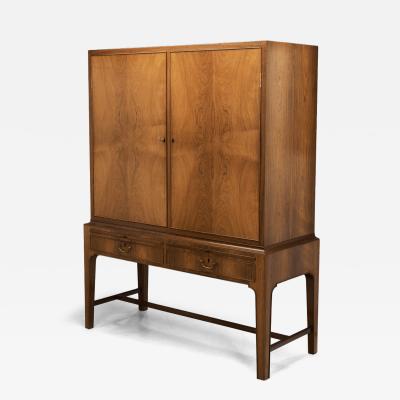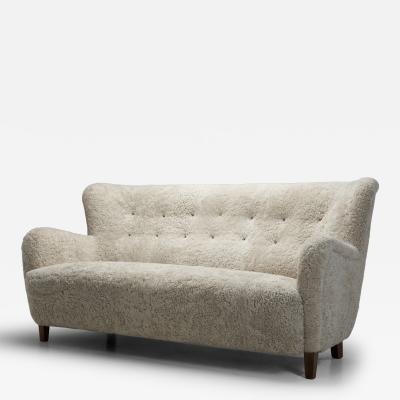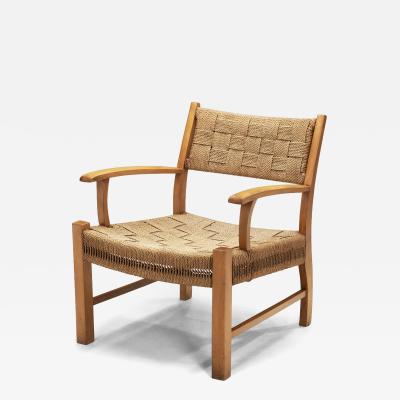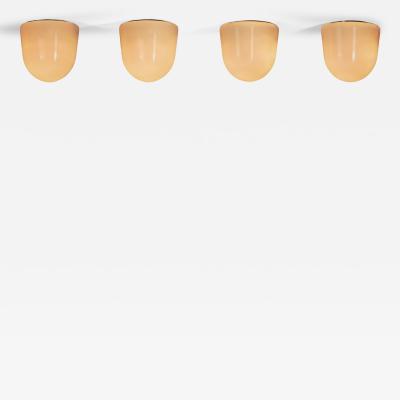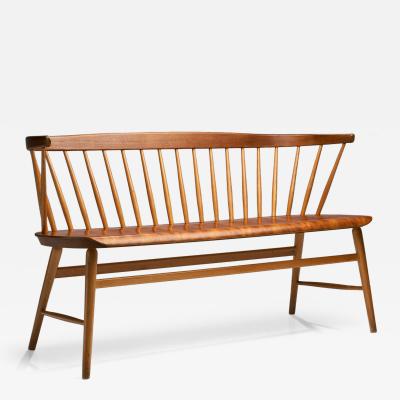Haagse School Armchair, The Netherlands First half of the 20th Century
-
Description
In 1920, the term "Nieuwe Haagse School" was first mentioned by the architect C.J. Blaauw. And not in a positive way. Blaauw thought nothing of the latest developments in modern architecture. "Typical of The Hague" - that was how the designer spoke of the style. The movement blossomed between 1925 and 1940 and brought uniformity to the cityscape. The Hague School style is closely related to the Amsterdam School and the Bauhaus movement, but has more-so been influenced by Art Deco, and it drew a great deal of inspiration from Berlage's rationalism, the Arts and Crafts movement, and De Stijl.
Standing as evidence of the reason many Dutch architects succeeded at the craft of furniture design; the precision of the structure is evident at first glance, showing great geometric order. Driven by function, the maker’s focus was evidently on practicality, structural stability, and a design in favour of these principles. The construction of this chair is traditional and robust - it features a solid yet graceful frame, crafted from a warm, rich wood, which highlights the natural grain of the material. The arms and backrests showcase a sense of airiness. This neat detail accentuates the high level of woodworking and creates an effortless look. The arms’ angles are aligned with the seats and backs’ angles, resulting in a harmonious look while also being ergonomic, with solid support for the spine. The sitting comfort is pleasant, further aided by the stability the sturdy wooden legs provide. The frame is complemented by the elegant rope seat woven tightly in the wood, with the material of the seat giving the piece a warm and cosy feel all while staying very functional. The chair’s simplicity and honest elegance makes it an exceptional piece of furniture.
Haagse School furniture wasn’t flashy but instead focused on being well-made and to fit a warm, comfortable and welcoming home. As this chair exemplifies, blending functionality, good quality natural materials and organic colours with excellent craftsmanship is the key to the success of this design period.
Condition:
In good vintage condition. Wear consistent with age and use. Item may have some marks, scratches, and discolouration.
Dimensions:
22.04 in W x 21.85 in D x 33.66 in H; Seat height 17.12 in; Seat depth 19.48 in; Arm height 26.57 in
56 cm W x 55.5 cm D x 85.5 cm H; Seat height 43.5 cm; Seat depth 49.5 cm; Arm height 67.5 cm
Shipping:
This armchair will be packaged and shipped with the greatest care and attention to make sure you will receive the item in gallery condition. Complimentary shipping within the Netherlands.
IMPORTANT!
VAT normally applies and will be added to items when purchased by a European buyer or transported to a location within the EU. -
More Information
Origin: Netherlands Period: 1920-1949 Materials: Wood, Woven Rope Condition: Good. In good vintage condition. Wear consistent with age and use. Item may have some marks, scratches, and discolouration. Creation Date: First half of the 20th Century Styles / Movements: Modern Dealer Reference #: 20253400 Incollect Reference #: 830662 -
Dimensions
W. 22.05 in; H. 33.66 in; D. 21.85 in; W. 56 cm; H. 85.5 cm; D. 55.5 cm; Seat H. 17.13 in; Arm H. 26.57 in; Seat H. 43.5 cm; Arm H. 67.5 cm;
Message from Seller:
Located in Utrecht, The Netherlands, H. Gallery specializes in modern and contemporary design with a strong focus on Brazil and Scandinavia. The gallery strives to preserve and promote especially Brazil's rich design heritage and curates a select group of contemporary artists. Meticulous research, ie getting in contact with the original designers, producers, their heirs, and retrieving and indexing old catalogues and magazines is at the heart of its activities. All works presented excel in great





